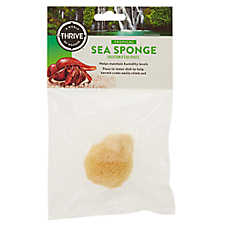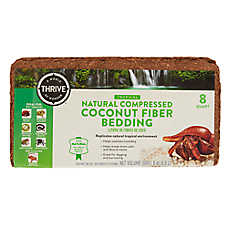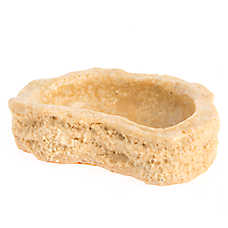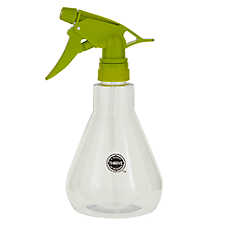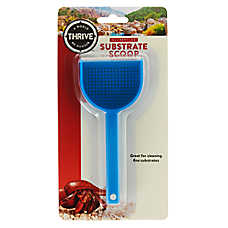Hermit Crabs
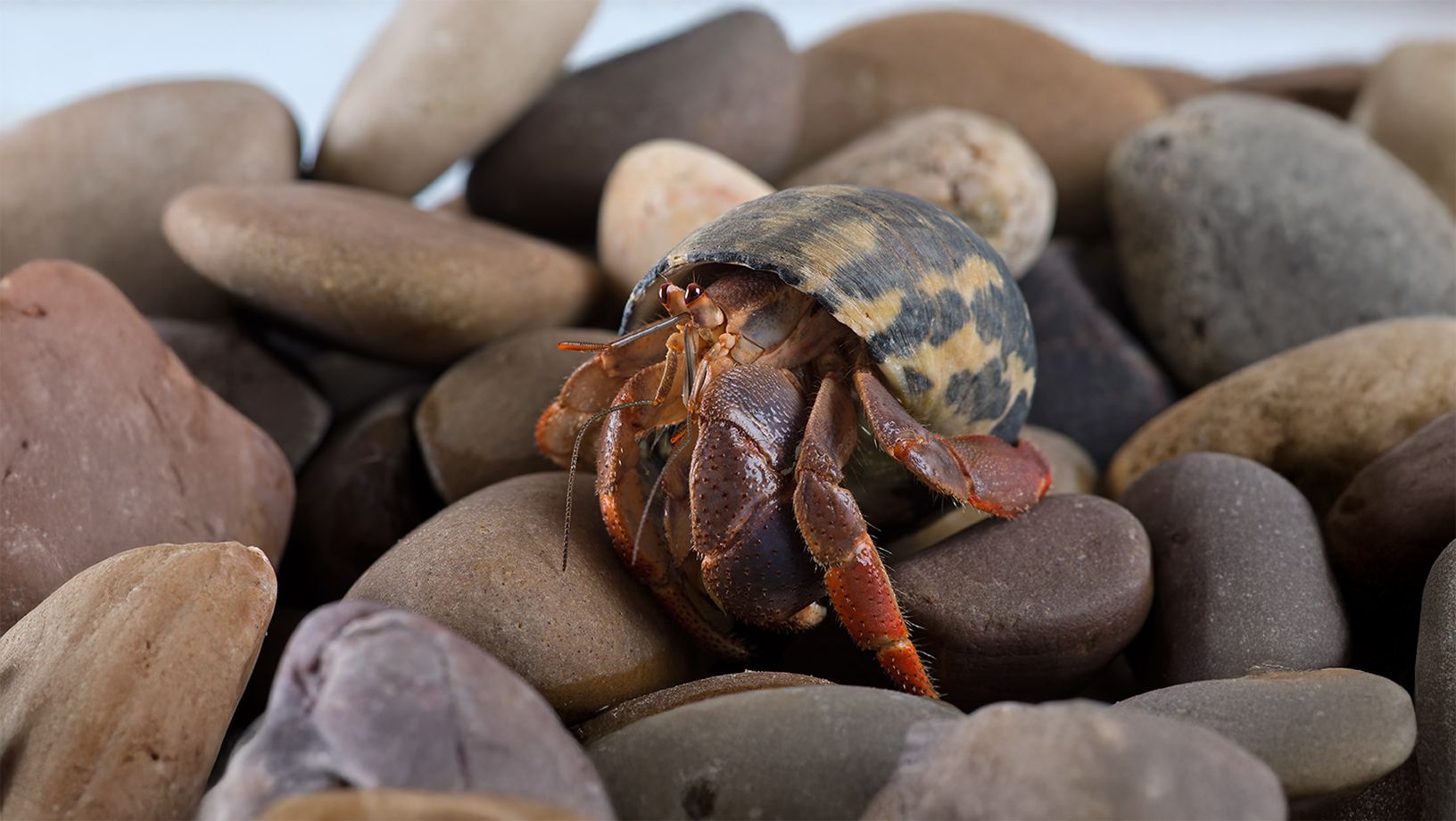
Long-lived and Interesting
Hermit crabs are popular pets with their unique behaviors and interesting activities. These crabs make great long-lived pets! In addition to the crabs, their terrarium can be decorated with live plants to make a lush and interesting habitat for you and your crabs!
Size: Hermit crabs average around 2” to 3” but can grow up to 6”
Lifespan: Typically, hermit crabs live from 10-20 years, but up to 40 years has been documented!
Behavior: Although hermit crabs live near water, they spend most of their time on land. They like to explore and forage for food, as well as socialize. Despite being “hermit” crabs, they live in community groups and are quite social! In the wild, hermit crabs have been known to live in colonies of 100 individual crabs! While we do not recommend getting that many, we do suggest keeping at least 3 hermit crabs together so they can be social and express some of their natural behaviors together.
Hermit crabs are curious, and inquisitive about their environment. Providing them with décor that they can explore including rock, driftwood, and plants makes an interesting habitat for you and your crabs!
Hermit crabs have a unique approach to finding shelter. Each hermit crab will find a shell that it finds appealing and when it outgrows that shell, will find a new shell home. It is very important to offer a variety of shells in different sizes with different appearances to give your hermit crab the chance to find a new home it likes.
Like many crustaceans, hermit crabs shed their exoskeletons as they grow in a process called molting. During this time, they will leave their comfortable shell, burrow into the soil in their habitat, and shed their exoskeletons. It is very important not to disturb them during this time as their bodies are soft and easily injured. Once the molting process is complete, your crab will come back to the surface and either return to their shell or choose a new shell if they have outgrown theirs.
Temperament: Hermit crabs can be handled and held carefully, but they may chirp and pinch if they feel threatened or scared. Generally, they will not pinch unless provoked and are more likely to retreat into their shells when startled. Hermit crabs should be housed in groups of 3 or more depending on how much space you can devote to them.
Hermit Crab Diet
Hermit crabs are sensitive to metal – make sure their food & water bowls are ceramic or another non-metal, non-porous material. Additionally, hermit crabs mostly feed at night, so offer them food in the evenings then remove leftover food in the morning to ensure habitat cleanliness.
PELLETED FOOD For smaller crabs that cannot pick up pelleted food, feed 1 teaspoon of crushed pellets or powdered food
FRESH GREENS & FRUITS Feed your crab a variety of dark, leafy vegetables such as kale or broccoli, and fresh or dried fruits such as apples, grapes, or bananas. Hermit crabs are sensitive to pesticides so take care to wash your produce prior to offering it or be sure to carefully source your produce.
WATER Hermit Crabs are unique in that they need access to two different types of water. One bowl should have dechlorinated freshwater while the other must have saltwater. Hermit Crabs live near the ocean and regularly go into both fresh and saltwater. The bowls must be deep enough that the crabs can fully submerse their bodies, including their shells. Make sure crabs can get in and out of these bowls with ease.
For saltwater, you can make your own using Instant Ocean Marine salt and dechlorinated water. A Hygrometer is important to check the salinity of the saltwater. For your hermit crabs, add 35g of salt per liter of water. A small scale makes this easier!
Hermit CRABitats
Important notes: Hermit crabs have modified gills but cannot breathe underwater. These gills means that hermit crabs require a humidity of 70-80%. They also mean that hermit crabs can drown if they cannot easily get out of their water bowls.
Habitat Setup: Creating a Safe and Enriching Environment
- House your hermit crabs in a terrarium that has 10 gallons of space for every 2-3 smaller crabs. As they molt and grow, or as you add more crabs, you will need to increase the tank size.
- Substrate: Line the bottom of the terrarium with a 50/50 mix of natural sand and coconut fiber/soil to mimic their natural coastal habitat. Avoid calcium carbonate sand, which can compact and cause injury, and never use potting soil that may contain harmful fertilizers or pesticides. Use organic, chemical-free substrates when possible, to keep your crabs safe and healthy.
- The substrate mix should be 3-4X deeper than the height of your largest crab. (The depth of soil is most important when your crab is molting.)
- Enrichment and Hiding: Create several hiding places in the habitat and add at least 3-5 larger empty shells per crab to use as future housing. Do not offer painted or decorated shells as paints and decorations can harm your crabs.
- Temperature and Humidity Control: A combination thermometer/hygrometer is needed to measure temperature and humidity. Hermit crabs prefer temperatures of 75-85° F (24-29° C). Under-tank heating pads can be used against the side or the back wall rather than underneath the tank as the thick substrate interferes with the heat rising from the bottom of the tank. You can also use a heat lamp to provide heat and simulate a day-night cycle.
- Some studies have shown that hermit crabs can benefit from low levels of UVB light, so a UVB bulb should also be used
- Humidity: Hermit crabs thrive in a humid tropical environment. Keep the humidity at 70-80%. Mist with spray bottle as needed to maintain environmental moisture.
- Water Access: Add two shallow dishes—one with fresh dechlorinated water and the second with dechlorinated marine-grade saltwater.
- If your terrarium includes hermit crabs of different sizes, put a rock in the bowl so the smaller ones can climb out.
- For saltwater, you can make your own using Instant Ocean Marine salt and dechlorinated water. A Hygrometer is important to check the salinity of the saltwater.
- Note: If you choose to use a natural sponge in your water dish for your crabs to cling to, be sure you have multiple so you can change the sponge out and clean it regularly, so it does not grow mold or excessive bacteria.
When to see a vet
Contact your aquatic veterinarian if you notice the following signs:
- Decreased appetite or activity
- Staying outside of their shell
- Excessive molting
- Lost claws or limbs
- Strong odor from inside the shell
If you observe any of these symptoms, we recommend visiting the "Find a Fish Vet" tool at fishvets.org or wavma.org to locate a qualified aquatic veterinarian in your area.
Shopping List
- Glass or acrylic aquarium/terrarium
- Secure screen lid or hood with light
- Fixture and bulbs
- Thermometer and hygrometer
- Marine grade salt
- Water conditioner/dechlorinator
- Natural sand and coconut fiber or soil
- Food bowl and two shallow water bowls
- New spray bottle
- Wood, rocks or other décor (never use cedar or other evergreen wood as it irritates the crabs)
- Coconut huts, caves, or artificial plants for hiding
- 3-5 extra shells per hermit crab
- Prepared hermit crab food & cuttlebone
- Toys and enrichment items to climb on and investigate
- Ex: driftwood, crab-safe plants, coral pieces, unpainted clay flowerpots.
Ready to learn more?
This guide is a great starting place, but we encourage you to do more research on the individual species that you are keeping so that you can be as successful as possible with your aquarium!
Related guides:
Vet Assured™: Pets purchased at PetSmart are part of our exclusive Vet Assured™ program, designed by PetSmart veterinarians to help improve the health and well-being of our pets. Our vendors meet a high standard in caring for pets and screening them for common illnesses. This program also includes specific standards for in-store pet care.
The PetSmart Promise: If your pet becomes ill during the initial 14-day period, or if you’re not satisfied for any reason, PetSmart will gladly replace the pet or refund the purchase price.
Safety tips for you and your pet:
1. ALL ANIMALS can potentially carry viral, bacterial, fungal, and parasitic diseases contagious to humans. 2. Thoroughly wash your hands with warm, soapy water before and after contact with any pet or its habitat. 3. Adults should assist children with hand washing after contact with a pet, its habitat or aquarium water. 4. Always add a dechlorinator or water conditioner and bacteria starter to tap water before adding it to the aquarium. 5. Do not use soaps or detergents to clean aquarium or decor, since they are toxic to fish. For more information, visit petsmart.com, cdc.gov/healthypets, or contact your veterinarian.
This care guide contains general information for the proper care of your pet, but is not comprehensive and is not a substitute for veterinary advice or care. PETSMART and VET ASSURED are trademarks of PetSmart Home Office, Inc. © 2025 PetSmart. All rights reserved.
The PetSmart Promise: If your pet becomes ill during the initial 14-day period, or if you’re not satisfied for any reason, PetSmart will gladly replace the pet or refund the purchase price.
Safety tips for you and your pet:
1. ALL ANIMALS can potentially carry viral, bacterial, fungal, and parasitic diseases contagious to humans. 2. Thoroughly wash your hands with warm, soapy water before and after contact with any pet or its habitat. 3. Adults should assist children with hand washing after contact with a pet, its habitat or aquarium water. 4. Always add a dechlorinator or water conditioner and bacteria starter to tap water before adding it to the aquarium. 5. Do not use soaps or detergents to clean aquarium or decor, since they are toxic to fish. For more information, visit petsmart.com, cdc.gov/healthypets, or contact your veterinarian.
This care guide contains general information for the proper care of your pet, but is not comprehensive and is not a substitute for veterinary advice or care. PETSMART and VET ASSURED are trademarks of PetSmart Home Office, Inc. © 2025 PetSmart. All rights reserved.


